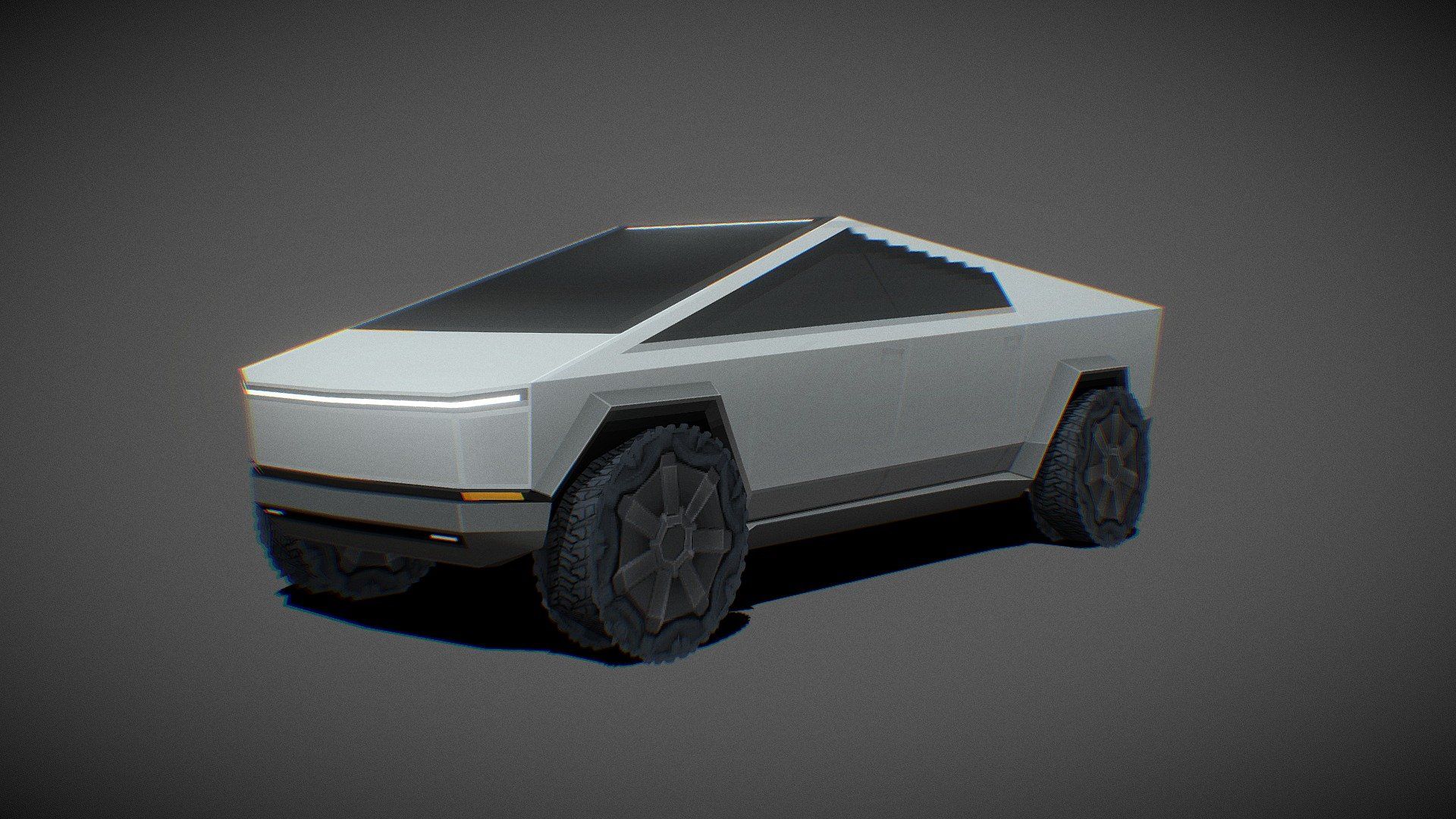
When embarking on the journey of vehicle ownership, the promise of longevity stands as a cornerstone of a sound investment. Few things are as frustrating as a car that succumbs to major mechanical woes long before its expected lifespan, transforming an initial appeal into a cascade of costly repairs and endless garage visits. While the market is rich with models celebrated for their endurance, a stark contrast exists in those that, despite initial allure, become notorious for premature breakdowns and significant long-term issues.
For consumers seeking to avoid such financial and practical strains, understanding which vehicles are prone to developing “triple-digit headaches”—problems that emerge well past the 100,000-mile mark—is paramount. This in-depth analysis, rooted in extensive data and consumer reports, aims to equip you with the knowledge to sidestep these potential pitfalls. Our focus is on models that may seem appealing at first glance, but whose underlying engineering and component weaknesses lead to frustration and considerable expense as the miles accrue.
In the spirit of consumer advocacy, we delve into the specific shortcomings of vehicles that have earned a reputation for falling short of expectations. We aim to provide clear, data-driven insights into why certain compacts and smaller related vehicles, despite their initial charm or affordability, prove to be anything but reliable companions for the long haul. These are the models that often force owners into uncomfortable decisions about exorbitant repair bills versus early vehicle replacement, underscoring the critical importance of informed decision-making in the automotive world.
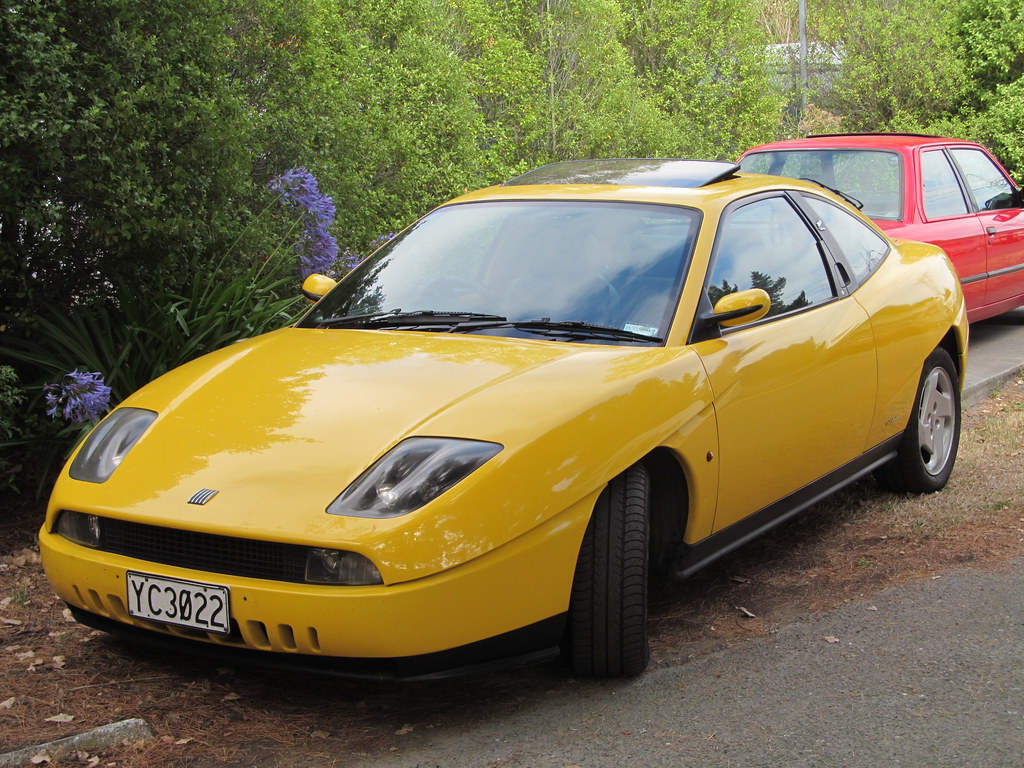
1. **Fiat 500: Fun Design, Flawed Durability**The Fiat 500, with its distinctive styling and urban-friendly dimensions, often captures the hearts of drivers looking for a charming and fuel-efficient compact car. However, beneath its appealing exterior lies a less dependable reality, as the model frequently falls short in terms of long-term reliability. Its playful design, unfortunately, doesn’t translate into enduring mechanical fortitude once the mileage starts to climb, leading to a host of common and often expensive problems for owners.
A significant concern revolves around its 1.4-liter engine, which, according to reports, “frequently suffers from oil leaks and excessive oil consumption.” This isn’t merely an inconvenience; unchecked oil issues can lead to more severe engine damage over time, necessitating costly interventions. Such problems detract significantly from the perceived fuel efficiency, as drivers find themselves pouring both fuel and additional oil into their vehicle, alongside unexpected repair expenses.
Further compounding the Fiat 500’s reliability woes is its automatic transmission, which is consistently identified as a weak point. Many owners report that the transmission begins to show “signs of failure well before 100,000 miles,” a threshold that many dependable vehicles breeze past. This premature transmission failure can be one of the most financially crippling repairs a car owner faces, often outweighing the car’s market value, making it a particularly problematic issue for those seeking sustained performance.
Beyond the powertrain, electrical issues are also a recurrent theme for the Fiat 500. Problems with sensors and wiring are common, leading to unpredictable breakdowns and frustrating diagnostic challenges. While it might be an enjoyable vehicle for short city commutes where mechanical demands are minimal, the Fiat 500 is unequivocally “not built for high mileage.” Owners often face mounting repair bills early in ownership, making it a poor choice for those prioritizing longevity and low ownership costs.
Car Model Information: 2012 FIAT 500 Lounge
Name: Fiat 500
Caption: 1970 Fiat 500 L
Aka: Puch 500
Manufacturer: Fiat Automobiles
Production: 1957–1975,3,893,294 units
Assembly: Turin,Desio
Designer: Dante Giacosa
Class: City car
BodyStyle: ubl
Layout: Rear-engine, rear-wheel drive layout
Doors: Suicide door,Car door#Conventional
Related: Autobianchi Bianchina,NSU/Fiat Weinsberg 500,Vignale Gamine,Autobianchi Giardiniera
Engine: Cubic centimetre,499 cc I2,594 cc I2
Transmission: Manual transmission
Wheelbase: {{convert,1840,mm,in,1,abbr=on
Abbr: on
Length: 2970 mm
Width: 1320 mm
Height: 1320 mm
Weight: 499 kg
Predecessor: Fiat 500 “Topolino”
Successor: Fiat 126,Fiat 500 (2007)
Sp: uk
Categories: 1960s cars, 1970s cars, All Wikipedia articles written in British English, All articles with unsourced statements, Articles containing Italian-language text
Summary: The Fiat 500 (Italian: Cinquecento, pronounced [ˌtʃiŋkweˈtʃɛnto]) is an economy / city car that was manufactured and marketed by Fiat Automobiles from 1957 until 1975. It was sold as a two-door semi-convertible or saloon car and as a three-door panel van or estate car.
Launched as the Nuova (new) 500 in July 1957, as a successor to the 500 “Topolino”, it was an inexpensive and practical small car. Measuring 2.97 metres (9 feet 9 inches) long, and originally powered by a rear-mounted 479 cc two-cylinder, air-cooled engine, the 500 was 24.5 centimetres (9.6 inches) smaller than Fiat’s 600, launched two years earlier, and is considered one of the first purpose-designed city cars.
In 1959, Dante Giacosa received a Compasso d’Oro industrial design prize for the Fiat 500. This marked the first time a Compasso d’Oro was awarded to an automotive manufacturer.
Get more information about: Fiat 500
Buying a high-performing used car >>>
Brand: Fiat Model: 500
Price: $5,950 Mileage: 91,698 mi.

2. **Ford Focus: Transmission Troubles Galore**The Ford Focus, particularly models equipped with the dual-clutch automatic transmission, has unfortunately carved out a “notorious reputation for early mechanical failure” within the compact car market. While the Focus aimed to offer a blend of practicality and efficiency, the pervasive issues with its transmission system have overshadowed its other attributes, leading to widespread consumer dissatisfaction and significant financial burdens for many owners.
The transmission problems associated with the Ford Focus are far from isolated incidents; they are described as “widespread,” encompassing rough shifting, stalling, and even complete breakdowns. These issues often demand “costly replacements,” a prospect that can be disheartening for drivers who invested in a vehicle expecting dependable service. Such fundamental powertrain failures significantly erode confidence in the vehicle’s ability to provide reliable transportation over time.
Beyond the critical transmission woes, the Focus also suffers from a rapid degradation of its suspension and steering systems. This premature wear results in a progressively “harsh ride” and compromised handling, diminishing the driving experience and potentially requiring further significant repairs. A vehicle’s ability to maintain its ride quality and stability is crucial for long-term satisfaction, and the Focus frequently falls short in this regard.
Adding to its list of mechanical deficiencies, the 2.0-liter engine in some Focus models is “known to burn oil prematurely,” which invariably reduces its overall lifespan. This issue, combined with other powertrain and chassis problems, paints a picture of a vehicle that struggles to maintain its integrity as the miles accumulate. The cumulative effect of these problems creates a cycle of maintenance and repair that is both time-consuming and expensive.
Electrical malfunctions, ranging from faulty sensors to complex wiring problems, further detract from the Ford Focus’s reliability score. These recurring issues contribute to unexpected vehicle behavior and additional repair costs, proving that while the Focus may be “inexpensive upfront,” its long list of problems makes it a vehicle that is “unlikely to last beyond 150,000 miles without major headaches.” It stands as a stark reminder that initial price savings can quickly be negated by future repair expenses.
Car Model Information: 2017 Ford Focus ST Base
Name: Ford Focus
Caption: 2018 Ford Focus ST-Line X
Manufacturer: Ford Motor Company
Production: 1998–2025
Class: Small family car
BodyStyle: hatchback
Layout: Front-engine, front-wheel drive,Front-engine, four-wheel-drive
Predecessor: Ford Escort (Europe)
ModelYears: 2000–2018 (North America)
Categories: 2000s cars, 2010s cars, 2020s cars, All articles with specifically marked weasel-worded phrases, All articles with unsourced statements
Summary: The Ford Focus is a compact car (C-segment in Europe) manufactured by the Ford Motor Company from 1998 until 2025. It was created under Alexander Trotman’s Ford 2000 plan, which aimed to globalize model development and sell one compact vehicle worldwide. The original Focus was primarily designed by Ford of Europe’s German and British teams. Production of the fourth generation Focus began in 2018 in Germany and China. In 2025, Ford announced that the Focus will no longer be built, in line with an announcement made in 2022.
Get more information about: Ford Focus
Buying a high-performing used car >>>
Brand: Ford Model: Focus
Price: $15,645 Mileage: 97,277 mi.

3. **Chevrolet Malibu: Style Over Staying Power**The Chevrolet Malibu presents itself as an appealing midsize sedan, often lauded for its comfortable ride and stylish aesthetics. However, despite its outward appeal and competitive pricing, its long-term reliability has been consistently undermined by a series of mechanical issues that tend to emerge well before the 150,000-mile mark. For those seeking enduring performance, the Malibu often prioritizes form over lasting function, leading to significant ownership challenges.
One of the primary concerns for Malibu owners centers on its 2.5-liter engine, which is “known for excessive oil consumption and premature timing chain wear.” These are not minor issues; unchecked, they can escalate rapidly, potentially leading to “catastrophic engine damage.” Such engine problems represent some of the most expensive and impactful repairs a vehicle can require, profoundly affecting its long-term viability and driving up ownership costs considerably.
Accompanying the engine’s vulnerabilities, the Malibu’s 6-speed transmission is frequently cited as a major weak point. It is “prone to shifting problems and sudden failure,” which can be both alarming and dangerous for drivers. A transmission that struggles to perform its basic function can quickly render a vehicle undriveable, necessitating either a complete overhaul or replacement, decisions that often come with a hefty price tag and significant inconvenience.
Beyond the critical powertrain components, the electrical systems within the Chevrolet Malibu have also been a source of recurring unreliability. Many drivers have reported experiencing “sensor malfunctions and stalling,” phenomena that can be unpredictable and concerning, especially when occurring during active driving. These electrical glitches contribute to a general sense of unease regarding the car’s dependability and signal deeper systemic issues within its design.
Furthermore, suspension components in the Malibu are noted to “wear quickly,” which directly impacts the vehicle’s ride quality over time. What starts as a comfortable and smooth driving experience gradually diminishes, leading to a less refined and potentially unsafe ride. Although the Malibu may appear competitive initially, its array of “reliability concerns and frequent repairs make it a risky choice for long-term ownership and high-mileage driving,” ultimately making it a vehicle that requires careful consideration before purchase.
While the allure of a new or pre-owned compact car can be strong, especially when presented with attractive price points or appealing designs, a deeper dive into their long-term reliability often reveals a different story. As we’ve seen, some models, despite their initial charm, quickly devolve into financial sinks for owners as they accumulate miles. Continuing our rigorous examination, we now turn our attention to additional vehicles that, based on extensive data and consumer experiences, are best bypassed by those seeking genuine longevity and peace of mind. These are the cars that have consistently shown a pattern of significant mechanical shortcomings and high repair costs once they cross the critical threshold of triple-digit mileage, demanding caution from prospective buyers.
Car Model Information: 2024 Chevrolet Malibu LT
Name: Chevrolet Malibu
Manufacturer: Chevrolet
ModelYears: 1964–1983,1997–2025
Class: Mid-size car
Layout: Front-engine, rear-wheel-drive layout
Predecessor: Chevrolet Chevelle
Successor: Chevrolet Celebrity
Caption: Ninth generation Chevrolet Malibu
Categories: 1970s cars, 1980s cars, 1990s cars, 2000s cars, 2010s cars
Summary: The Chevrolet Malibu is a mid-size car that was manufactured and marketed by Chevrolet from 1964 to 1983 and from 1997 to 2025. The Malibu began as a trim-level of the Chevrolet Chevelle, becoming its own model line in 1978. Originally a rear-wheel-drive intermediate, GM revived the Malibu nameplate as a front-wheel-drive car in 1997.
Named after the coastal community of Malibu, California, the Malibu has been marketed primarily in North America, with the eighth generation introduced globally. Malibu production in the US ended in November 2024, as the Fairfax plant is being retooled for the upcoming second-generation Chevrolet Bolt. The Malibu is now the last sedan to have been sold by Chevrolet in the US.
Get more information about: Chevrolet Malibu
Buying a high-performing used car >>>
Brand: Chevrolet Model: Malibu
Price: $18,690 Mileage: 35,097 mi.
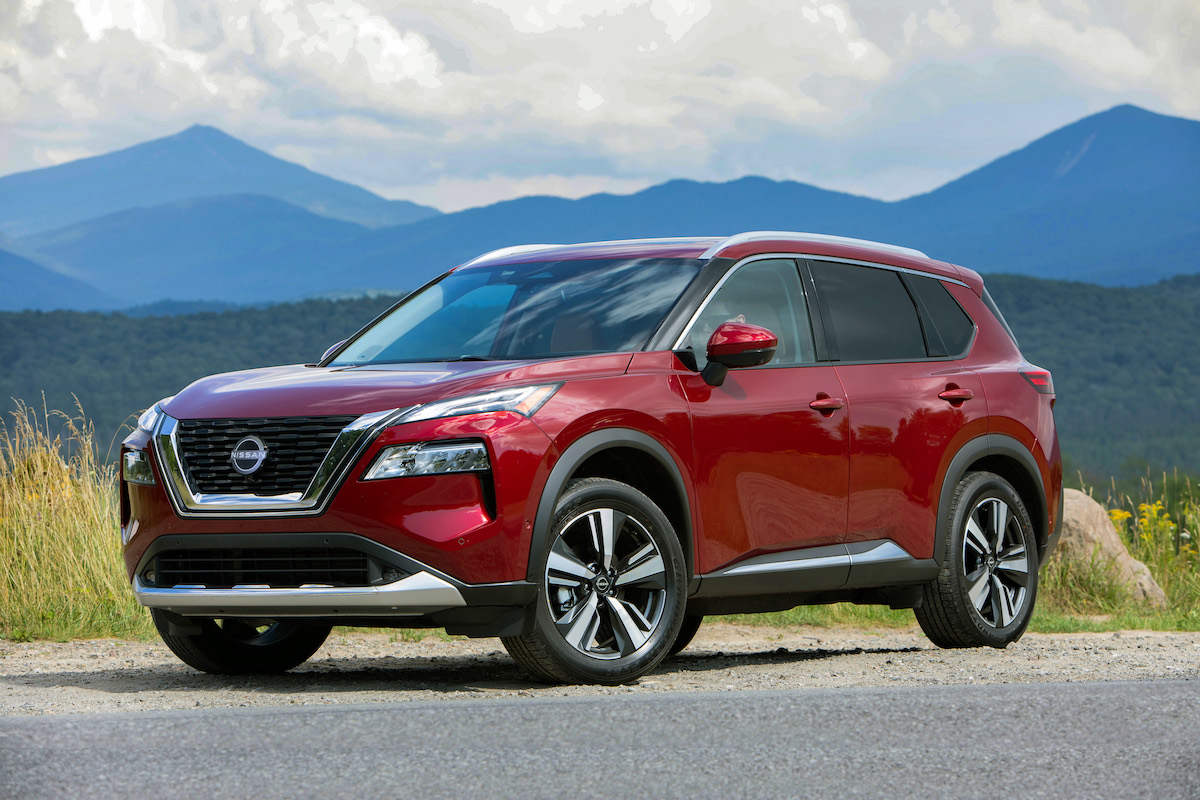
4. **Nissan Altima: CVT Woes Undermine Its Appeal**The Nissan Altima has often been marketed as a sensible midsize sedan, offering decent fuel economy and a smooth ride in its early life. However, its reputation takes a severe hit in the reliability department, primarily due to one critical component: its continuously variable transmission (CVT). This particular transmission has become notorious among owners and mechanics alike, earning the Altima a spot on lists of vehicles that struggle with long-term dependability, frequently manifesting problems well before the 100,000-mile mark.
The problems associated with the Altima’s CVT are far from minor inconveniences; they include reports of the transmission jerking, slipping, and, in many severe cases, experiencing total failure. Such fundamental transmission issues can render a vehicle inoperable, forcing owners into decisions about expensive replacements or overhauls that often far exceed the car’s depreciated value. This premature and costly component failure significantly undermines any initial appeal the Altima might have offered, transforming it into a high-risk investment for extended ownership.
Beyond the pervasive transmission concerns, the Altima’s 2.5-liter engine also contributes to its reliability woes. This engine has a well-documented tendency to burn oil, an issue that can lead to reduced performance, increased wear on internal components, and ultimately, a shortened lifespan. When combined with the problematic CVT, these powertrain deficiencies create a compounding effect of unreliability and necessitate frequent, often expensive, interventions.
Furthermore, other areas such as the fuel system and various electronic components in the Nissan Altima have also been identified as sources of recurring issues. These problems collectively contribute to a pattern of high repair costs, leading to frustration for owners who had expected a dependable mode of transport. While the Altima may present a smooth ride and decent fuel economy initially, its major mechanical shortcomings, particularly with the CVT, position it as a poor option for drivers prioritizing lasting performance and low maintenance over the long haul.
Car Model Information: 2017 Nissan Altima 2.5 SV
Name: Nissan Altima
Caption: 2024 Nissan Altima SR (L34; US)
Manufacturer: Nissan
Aka: Nissan Bluebird
Production: 1992–present
Class: Compact car
Predecessor: Nissan Bluebird,Nissan Stanza
ModelYears: 1993–present
Categories: 2000s cars, 2010s cars, 2020s cars, All-wheel-drive vehicles, All Wikipedia articles written in American English
Summary: The Nissan Altima is a mid-size car manufactured by Nissan since 1992. It is a continuation of the Nissan Bluebird line, which began in 1955.
The Altima has historically been larger, more powerful, and more luxurious than the Nissan Sentra but less so than the Nissan Maxima. The first through fourth-generation cars were manufactured exclusively in the United States and officially sold in North and South America, along with the Middle East and Australia. For other markets, Nissan sold a related mid-size sedan called the Nissan Teana which was between the Altima and Maxima in terms of size. In 2013, the Teana became a rebadged version of the fifth-generation Altima.
The name “Altima” was originally applied to a top trim line of the Nissan Leopard for the Japanese market in 1986, and then to the Nissan Laurel Altima mid-size car sold in Central America and the Caribbean before 1992. In 1992, Nissan discontinued the Stanza which was a Nissan Bluebird clone, replacing it with the US-built Altima, while remaining a compact car. The first Altima was produced in June 1992, as a 1993 model. All Altima models for the North American market were built in Smyrna, Tennessee, until June 2004, when Nissan’s Canton, Mississippi plant also began producing the model to meet high demand.
Get more information about: Nissan Altima
Buying a high-performing used car >>>
Brand: Nissan Model: Altima
Price: $11,961 Mileage: 90,272 mi.
Read more about: Steer Clear: The 12 Most Unreliable Cars of the Last Decade & Today, According to Experts
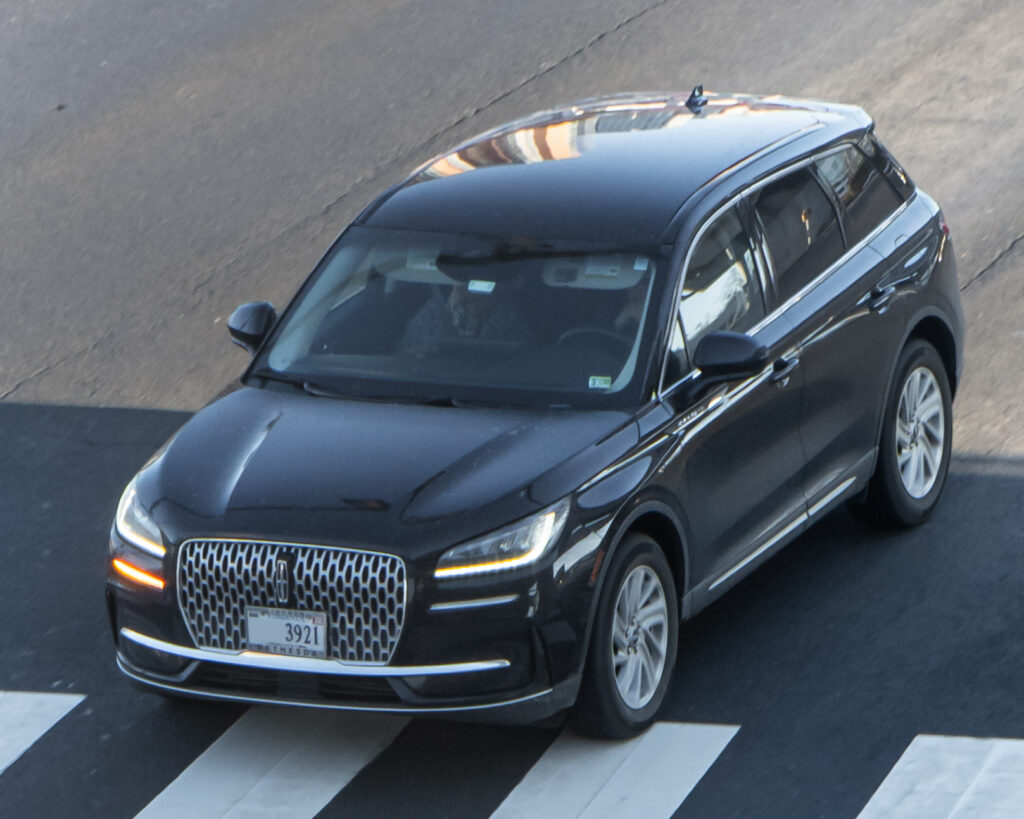
5. **Lincoln Corsair: Luxury Interrupted by Recalls**The Lincoln Corsair, positioned as a compact luxury SUV, offers an appealing blend of upscale features and a competitive price point, often drawing in buyers looking for a more refined driving experience. However, despite its luxurious facade and attractive initial cost, the Corsair has unfortunately failed to maintain a strong track record for reliability. This lack of enduring dependability has led to concerns among consumers and, notably, prompted Consumer Reports to withdraw its recommendation for the model in 2024, highlighting its poor long-term outlook.
A significant factor contributing to the Corsair’s questionable reliability is its extensive recall history across various model years. For instance, the 2021 Lincoln Corsair was subject to a striking 18 recalls, addressing critical systems ranging from the rearview camera and seat belts to the engine and electrical components. The subsequent 2022 models also faced a substantial 15 recalls, many of which pertained to the very same systems that had issues in prior iterations, suggesting persistent underlying design or manufacturing flaws.
Even more recent models, such as the 2023 Corsair, accumulated eight recalls, and the 2024 model year has continued to fall under some of the same overarching recalls that impacted millions of vehicles. This recurring pattern of safety and operational issues across multiple years indicates that fundamental problems have not been adequately addressed in successive iterations. Such a consistent stream of recalls significantly erodes consumer confidence, raising questions about the vehicle’s inherent build quality and the manufacturer’s commitment to resolving known defects effectively.
This continuous need for significant repairs and manufacturer interventions makes the Lincoln Corsair a less-than-ideal choice for those seeking a reliable luxury experience that stands the test of time. While its initial price and comfort may be enticing, the documented history of extensive recalls and the subsequent withdrawal of its reliability endorsement from respected consumer organizations underscore that the Corsair often requires considerable attention and expense well before it reaches high mileage. It serves as a stark reminder that luxury does not always equate to longevity, especially when fundamental components are repeatedly subject to serious issues.
Car Model Information: 2021 Lincoln Corsair Reserve
Name: Lincoln Corsair
Caption: 2020 Lincoln Corsair
Production: August 2019–present
ModelYears: 2020–present
Manufacturer: Lincoln Motor Company
Assembly: ubl
Designer: Kemal Curić
Class: Compact executive car,Crossover (automobile)
BodyStyle: Sport utility vehicle
Layout: Front-engine, front-wheel-drive layout,Front-engine, four-wheel-drive layout
Platform: Ford C2 platform
Related: Ford Escape#fourth,Ford Bronco Sport
Engine: Petrol engine,Ford EcoBoost engine#2.0 L “Twin-scroll” (2015–),Ford EcoBoost engine#2.3 L,Plug-in hybrid,Ford Duratec engine
Motor: Synchronous motor#Permanent-magnet
Transmission: Automatic transmission
Battery: kwh,lithium-ion
Wheelbase: 2710 mm
Abbr: on
Order: flip
Length: 4608 mm
Width: 2108 mm
Height: 1630 mm
Predecessor: Lincoln MKC
Sp: us
ElectricRange: convert
Charging: SAEJ1772 (3.3nbspkW AC) (Grand Touring)
Categories: 2020s cars, All Wikipedia articles written in American English, Articles with short description, Cars introduced in 2019, Commons category link from Wikidata
Summary: The Lincoln Corsair is a compact luxury crossover marketed and sold by the Lincoln brand of Ford Motor Company since the 2020 model year. It replaced the MKC. Since 2020, the Corsair has been the best-selling vehicle for the Lincoln brand. In August 2025, it was announced that Ford would be discontinuing the Lincoln Corsair after the 2026 model year.
Get more information about: Lincoln Corsair
Buying a high-performing used car >>>
Brand: Lincoln Model: Corsair
Price: $27,673 Mileage: 47,627 mi.
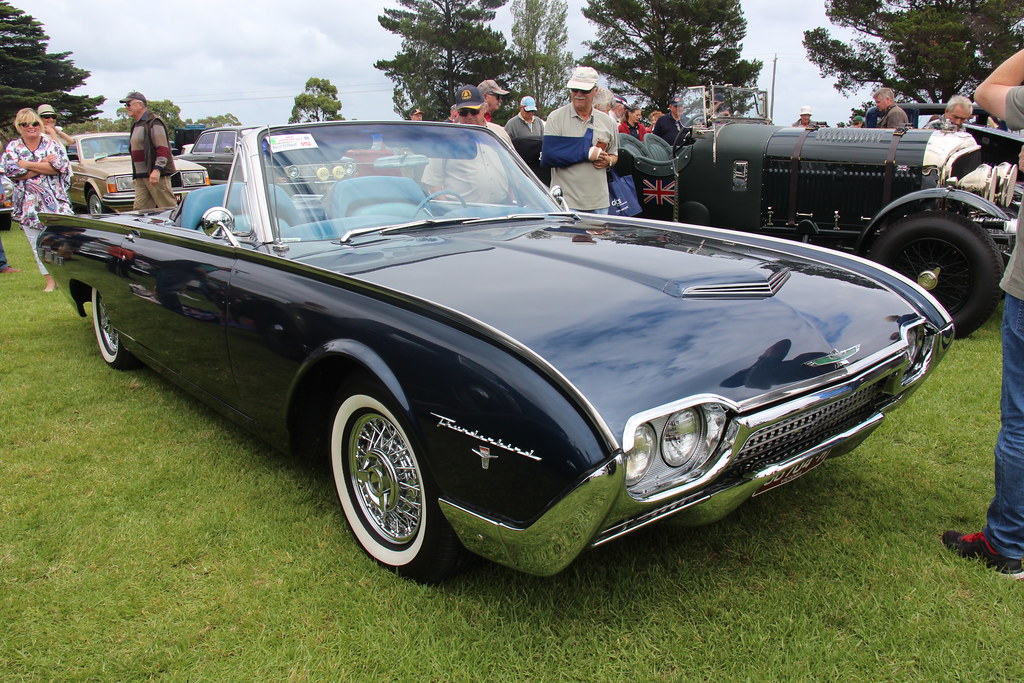
6. **Ford Escape Hybrid: Efficiency Undermined by Failures**The Ford Escape Hybrid, entering the competitive hybrid SUV market, promises an appealing combination of fuel efficiency and the practicality of an SUV. While hybrid technology generally aims to offer a more economical and environmentally conscious driving experience, the Escape Hybrid has unfortunately presented a challenging ownership journey for many, with its reliability falling short of expectations. Despite the well-known Ford name, this hybrid variant has seen its endorsement for reliability from Consumer Reports withdrawn in 2024, signaling significant concerns for prospective buyers.
The root of many of the Escape Hybrid’s reliability issues can be traced to a disturbing number of recalls and owner complaints, particularly evident in the 2021 model year. This specific iteration, officially known as the Ford Escape HEV, was the subject of an alarming 14 recalls and hundreds of complaints. These weren’t minor issues; many recalls addressed critical safety and operational failures, including engine failures that posed a fire risk, high-voltage battery short-circuits also presenting fire hazards, and software problems that could lead to complete battery failure.
Further compounding these severe issues, the 2021 Escape HEV also faced recalls related to fuel system problems and potential oil leaks. The cumulative effect of such widespread and serious defects paints a worrying picture for long-term ownership. Even with years of hybrid manufacturing experience, the persistent nature and severity of these recalls indicate a struggle with fundamental engineering and quality control, making the vehicle a risky proposition for any driver counting on consistent, trouble-free operation.
Therefore, while the Ford Escape Hybrid might initially appear to be a sensible choice for those looking to reduce fuel consumption and embrace greener automotive technology, its documented track record of substantial mechanical and electrical issues necessitates extreme caution. The withdrawal of its reliability endorsement by a trusted consumer organization, coupled with a history of numerous and serious recalls, underscores that the Escape Hybrid often demands significant repairs and attention. These issues invariably negate the cost savings from its efficiency, transforming it into a vehicle that could easily become a source of considerable financial and practical headaches for its owners as it ages.
Car Model Information: 2019 Volkswagen Atlas 3.6L SE
Name: Ford Escape
Caption: 2021 Escape Hybrid (US)
Manufacturer: Ford Motor Company
Aka: Unbulleted list
Production: 2000–present
ModelYears: 2001–present
Class: Compact crossover SUV
BodyStyle: SUV
Layout: Unbulleted list
Predecessor: Nissan Terrano II
Successor: Ford Territory (China)
Categories: 2010s cars, 2020s cars, All-wheel-drive vehicles, All Wikipedia articles written in American English, All articles with dead external links
Summary: The Ford Escape is a compact crossover SUV manufactured and marketed by the Ford Motor Company since the 2001 model year. The first Ford SUV derived from a car platform, the Escape fell below the Ford Explorer in size; the Escape was sized between the Ford EcoSport and Ford Edge. The 2005 model year Ford Escape Hybrid was the first hybrid-electric vehicle from Ford, and the first hybrid produced as an SUV.
The first two generations of the Escape used the Ford CD2 platform (jointly developed with Mazda), leading to the release of the rebadged variants, the Mazda Tribute and Mercury Mariner; as with the Escape, both the Tribute and Mariner were marketed in North America (the Mariner was never marketed in Canada). In Europe, the Escape was initially branded as the Ford Maverick from 2001 to 2008 (replacing a Nissan-produced SUV).
Under the mid-2000s “One Ford” globalization strategy, the third and fourth-generation designs of the Escape have been unified with the Ford Kuga, designed by Ford of Europe. Sharing a common body and chassis underpinnings (and several engines), the Escape and Kuga are manufactured in their home markets. As with previous generations, the fourth-generation Escape is offered with gasoline, hybrid, and plug-in hybrid options. Outside of North America, the Ford Escape is marketed in Australia, China, and Taiwan.
In August 2025, it was announced that Ford will be discontinuing the Escape after the 2026 model year.
Get more information about: Ford Escape
Buying a high-performing used car >>>
Brand: Ford Model: Escape Hybrid
Price: $15,988 Mileage: 72,895 mi.

7. **Dodge Journey: An SUV That Ages Poorly**The Dodge Journey, often marketed as an affordable and family-friendly SUV, initially appeals to budget-conscious consumers seeking space and versatility. However, this appeal quickly wanes as the vehicle accumulates miles, revealing a significant lack of durability and a predisposition for premature mechanical failures. For families and individuals relying on long-term reliability, the Journey frequently falls well short of expectations, proving that initial affordability often comes at a steep price in future repair bills.
One of the primary sources of frustration for Journey owners lies within its engine options. The base 2.4-liter engine is notoriously prone to frequent overheating and performance issues, which can lead to costly repairs and potential long-term damage if not addressed promptly. Similarly, the optional 3.6-liter V6, while offering more power, is plagued by its own set of problems, including recurring oil leaks and excessive oil consumption. These engine vulnerabilities significantly compromise the vehicle’s lifespan and operational integrity, turning what should be a routine drive into a source of constant worry.
Adding to the Journey’s mechanical deficiencies is its automatic transmission, which stands out as another major point of failure. Numerous owners have reported issues such as rough shifting, unpredictable behavior, and complete breakdowns occurring prematurely. Transmission repairs are among the most expensive a vehicle can incur, and the Journey’s propensity for early transmission failure makes it an especially problematic choice for those seeking dependable, high-mileage performance without significant financial strain. This core component’s unreliability fundamentally undermines the vehicle’s suitability for sustained use.
Beyond the critical powertrain issues, the Dodge Journey also suffers from rapid degradation of its interior materials, leading to a worn and aged appearance well before its time. Furthermore, its infotainment system is frequently criticized for being outdated and prone to glitches, detracting from the overall user experience. By the time a Dodge Journey approaches the 150,000-mile mark, owners often face a cascade of significant and costly repairs. These widespread problems underscore why this SUV, despite its initial low cost, is a poor investment for families needing long-term reliability and low ownership costs.
Car Model Information: 2019 Dodge Journey SE
Name: Dodge Journey
Caption: 2012 Dodge Journey
Manufacturer: Dodge
Aka: Fiat Freemont,Dodge JC (Japan),Dodge JCUV (China)
Production: 2008–2020
ModelYears: 2009–2020,2011–2015 (Freemont)
Assembly: Toluca, Mexico
Designer: Ryan Nagode
Class: Mid-size crossover SUV
BodyStyle: SUV
Platform: Mitsubishi GS platform
Related: Chrysler 200,Chrysler Sebring,Dodge Avenger
Layout: Front-engine, front-wheel-drive layout
Engine: ubl
Transmission: Ultradrive#40TES/41TES
Wheelbase: 2890 mm
Abbr: on
Order: flip
Length: 192.4 in
Width: 72.2 in
Height: 66.6 in
Weight: 3818 lb
Predecessor: Fiat Ulysse,Fiat Croma
Successor: Dodge Journey (2021)
Categories: 2010s cars, 2020s cars, All-wheel-drive vehicles, All articles with dead external links, All articles with unsourced statements
Summary: The Dodge Journey is a mid-size crossover SUV manufactured and marketed by Fiat Chrysler Automobiles’ Dodge brand for model years 2009 to 2020 over a single generation, with a facelift for the 2011 model year. The Journey was styled by Ryan Nagode, and was marketed globally in both left- and right-hand drive, including as the Fiat Freemont.
Internally identified as the JC49, the Journey shares FCA’s global D-segment platform with the Dodge Avenger and a nearly identical wheelbase to the outgoing short-wheelbase (SWB) Dodge Caravan.
Having debuted at the 2007 Frankfurt Motor Show, the Journey subsequently appeared at the 2009 Frankfurt Motor Show. All models were manufactured in Mexico at FCA’s Toluca Assembly facility, with just over 1.1 million manufactured before production ended in 2020.
Get more information about: Dodge Journey
Buying a high-performing used car >>>
Brand: Dodge Model: Journey
Price: $10,964 Mileage: 83,381 mi.
Read more about: Buyer Beware: 12 Cars That Will Cost You a Fortune Before You Hit 50,000 Miles

8. **Kia EV6: Modern EV with Reliability Growing Pains**The Kia EV6, as a contemporary all-electric crossover, boasts a stylish design, impressive range boosts, and a forward-thinking approach to automotive technology. Its introduction to the market generated considerable excitement, positioning it as a strong contender in the rapidly expanding EV segment. However, like many newer electric vehicles, the EV6 has encountered its share of reliability hurdles, leading to its exclusion from Consumer Reports’ list of recommended vehicles for dependability. This indicates that despite its innovative features, the EV6 is still navigating some significant “growing pains” in its early years.
A key area of concern for the Kia EV6 stems from its recall history, which, while not as extensive in number as some internal combustion engine vehicles, includes issues of serious consequence. For example, the 2022 EV6, being the first model year, experienced three recalls, two of which pertained to charging unit problems that could cause the vehicle to lose power, potentially stranding drivers. Another significant recall involved a software problem with the shifter, which could result in the vehicle rolling away while parked—a substantial safety concern for owners and their surroundings.
These recalls highlight fundamental issues within the EV6’s electrical and powertrain systems, which are critical for an electric vehicle’s core function and safety. While Kia, like many manufacturers, is often proactive in addressing these problems through recalls, the nature of these issues—ranging from power loss to uncontrolled movement—underscores the need for further refinement in the vehicle’s engineering and software. For a relatively new vehicle in a cutting-edge segment, such foundational problems can quickly erode consumer trust and confidence in its long-term viability.
While the Kia EV6 may not accumulate the sheer volume of complaints or recalls seen with some of the most established, high-volume gasoline vehicles, the severity and foundational nature of its reported issues are significant. Owners might perceive the manufacturer as proactive, but the necessity of these major interventions suggests that the EV6 still requires considerable development to achieve a level of dependability comparable to top-tier reliable vehicles. Therefore, for those prioritizing consistent, trouble-free ownership from an EV, it might be prudent to wait for future iterations where these early reliability issues are more fully resolved.
**Making Informed Choices for Lasting Value**
Navigating the complex world of vehicle purchases demands more than just an appreciation for design or a quick glance at the price tag. Our comprehensive review of these eight compacts underscores a crucial lesson: initial appeal can often mask underlying mechanical vulnerabilities that lead to substantial financial and practical burdens as a car ages. While the promise of innovation and affordability is alluring, true value in vehicle ownership is ultimately measured by longevity and unwavering reliability.
Vehicles like the Fiat 500, Ford Focus, Chevrolet Malibu, Nissan Altima, Lincoln Corsair, Ford Escape Hybrid, Dodge Journey, and Kia EV6, despite their varied market positions, share a common thread of premature mechanical issues that manifest well before their expected lifespan. Their recurring problems with engines, transmissions, electrical systems, and overall durability serve as powerful cautionary tales for any prospective buyer.
Read more about: Navigating the Electric Highway: Unveiling the Smoothest EV Charging Experiences and Fastest Vehicles
Ultimately, the path to a satisfying and financially sound vehicle ownership experience is paved with thorough research and an understanding of a car’s long-term track record. Choosing a vehicle known for enduring performance means investing in peace of mind, avoiding the hidden costs of frequent repairs, and ensuring that your automotive companion remains a reliable asset for many miles to come. Remember, the true cost of a car extends far beyond its purchase price; it lies in its ability to go the distance without becoming a constant source of “triple-digit headaches.”


